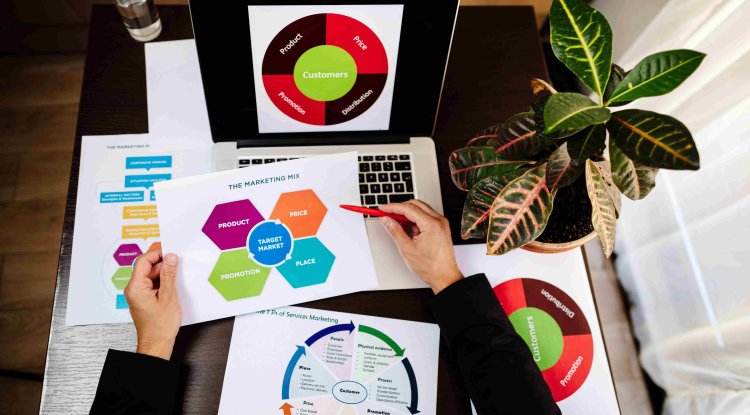Maximizing Marketing Impact through Geographic Segmentation: The Key to Hyper-Localized Campaigns
Learn how geographic segmentation can supercharge your localized marketing campaigns. Discover tools, strategies, and a case study demonstrating how to drive higher engagement and ROI.

In today’s highly competitive digital landscape, precision in marketing is crucial. Geographic segmentation, the practice of tailoring marketing strategies to specific regional audiences, can dramatically enhance the effectiveness of your campaigns. By addressing the unique needs, behaviors, and cultural nuances of consumers based on their location, businesses can create targeted, high-converting marketing strategies that drive greater engagement and ROI.
Understanding Geographic Segmentation
At its core, geographic segmentation divides a broader audience into smaller, more targeted groups based on physical location. Whether your business is focused on local, national, or international audiences, geographic segmentation enables a more personalized approach to marketing, ensuring that your messaging resonates with the unique preferences of each region.
Geographic segmentation can be broken down into several categories:
- Country: Tailoring campaigns based on national trends, legal requirements, or cultural preferences.
- Region or State: Adjusting messaging based on regional climate, culture, or local market competition.
- City or Neighborhood: Hyper-local marketing that addresses specific communities, their values, and local events.
By using these subdivisions effectively, you ensure that your campaigns are not only targeted but also culturally relevant and timely.
The Power of Localized Marketing
Localized marketing allows brands to speak directly to consumers in a language they understand, considering local preferences, weather conditions, holidays, and even sporting events. One size does not fit all when it comes to marketing, and geographic segmentation gives you the agility to adjust your campaigns to meet the needs of various regions.
For instance, let’s say you’re running a national campaign for a retail brand in the United States. The buying behavior of consumers in Los Angeles may be vastly different from those in New York due to climate, lifestyle, and cultural differences. While New Yorkers may be more inclined to purchase winter coats in November, consumers in Los Angeles might still be seeking lightweight fall jackets. Geographic segmentation allows you to adjust your inventory, messaging, and offers accordingly.
Case Study: Driving Engagement with Localized Campaigns
I recall a campaign where my team and I at SMRTMR.com harnessed geographic segmentation to improve marketing results for a client in the e-commerce space. The client, a global brand selling outdoor gear, was looking to boost sales during the summer season.
By implementing geographic segmentation, we divided the audience based on climate conditions across different regions in the U.S. For areas experiencing hot, dry summers, we highlighted products like sun hats, portable coolers, and lightweight camping tents. Meanwhile, for regions with a milder climate, we pushed rain gear, windbreakers, and hiking boots.
The results were remarkable: engagement rates doubled in areas where we personalized product recommendations based on regional climate, and the client saw a 25% increase in overall sales. This case demonstrates the undeniable power of geographic segmentation in driving customer engagement and boosting sales by providing more relevant and personalized experiences.
Tools and Technologies to Leverage Geographic Segmentation
To harness the full potential of geographic segmentation, having the right tools in place is critical. Platforms like Marketo and Salesforce allow you to create region-specific customer journeys and tailor your marketing messages based on user data.
-
Marketo: As a platform, Marketo allows for sophisticated segmentation that can integrate geographic location with behavioral data. By using data points like zip codes, you can trigger location-based personalized content to be delivered at the right time.
-
Google Ads and Facebook Ads: Both Google and Facebook allow advertisers to run location-based ad campaigns. This means you can serve tailored ads to users in a specific geographic area, further enhancing the effectiveness of your ad spend.
-
Data Enrichment Tools: Tools like Clearbit and ZoomInfo can enrich your customer data by adding detailed geographic information. This gives your marketing team the insights they need to refine campaigns and target users more effectively.
Challenges to Consider
While geographic segmentation is powerful, it isn’t without its challenges. Some potential hurdles include:
- Data Availability: Ensure your CRM or database contains detailed geographic information about your leads or customers. Without accurate location data, segmentation efforts could be wasted.
- Cultural Sensitivity: When targeting different regions, it’s important to be culturally aware. Messaging that works well in one area might not resonate—or could even offend—in another.
- Cost of Customization: Tailoring marketing efforts to multiple regions requires more resources. Custom creative, messaging, and offers for different areas can increase production costs, so it’s important to weigh this against the potential increase in ROI.
Conclusion: Localized Campaigns for Global Success
Geographic segmentation enables brands to run hyper-localized campaigns that resonate deeply with specific audiences. By leveraging location data, businesses can deliver personalized content and offers that drive higher engagement and conversions. From addressing local climate to tailoring cultural references, geographic segmentation gives brands the edge needed to succeed in a global marketplace.
At SMRTMR.com (Strategic Marketing Reach Through Marketing Robotics), we’re passionate about helping businesses like yours harness the power of marketing automation and segmentation to achieve meaningful results. With my extensive experience in digital marketing and technology, I’ve seen firsthand how geographic segmentation can drive success and boost business growth.
If you’re looking to take your marketing strategies to the next level with tools like Marketo and Salesforce, I invite you to connect with me on LinkedIn. Together, we can explore how to unlock the full potential of your marketing efforts.
About Me
I’m Raghav Chugh, a seasoned digital marketing and technology professional with a passion for leveraging data to drive business success. With three Marketo Certified Expert (MCE) certifications and extensive experience in lead lifecycle design, marketing activities, and database management, I am well-equipped to guide you on your journey to mastering Marketo's Revenue Cycle Analytics.
Connect with me on LinkedIn for more insights into the world of digital marketing and technology.
About SMRTMR.com
At SMRTMR.com (Strategic Marketing Reach Through Marketing Robotics), we are dedicated to providing valuable information and resources to readers across the globe. Our articles, like this one, aim to empower individuals and businesses with the knowledge they need to succeed in the ever-evolving digital landscape.
SMRTMR.com has become a trusted source for professionals seeking to stay ahead in the world of digital marketing, with content crafted by experts like Raghav Chugh, the founder of the platform. Join us at SMRTMR.com to continue your journey in mastering digital marketing.
What's Your Reaction?




















